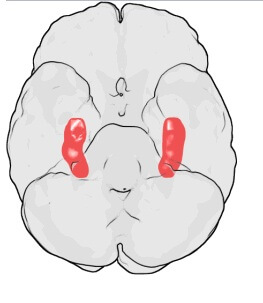Can exercise exercises improve learning skills and memory in old age?

In the mammalian brain, including the human brain, there is an area that, because of its resemblance to a seahorse, is called Hippocampus, the Latin name of the fish. This area is found on both sides of the brain and is largely involved in learning and memory processes. Damage to the hippocampus on one side hardly affects learning and memory. On the other hand, damage to both sides significantly impairs the ability to remember and causes disorientation in space. There is also an impairment in the ability to learn and remember new things.
It turns out that at older ages, over the age of 60, there is a decrease in the volume of the hippocampus on the order of 1.5% per year. This was first demonstrated in animals, but with the development of modern quantitative methods of magnetic resonance imaging (MRI), the decrease in hippocampal volume was also found in humans. The hippocampus is also one of the first areas affected by Alzheimer's disease. With the increase in life expectancy, Alzheimer's disease and dementia have become more common, but so far no effective drug treatment has been found for them, which would replace the various drugs on the market that are characterized, among other things, by serious side effects. At the same time, the budgetary burden on the society suffering from these diseases increases over the years. Researchers are therefore looking for ways to reduce the loss of memory with age in an effective and cheap way and above all without harmful side effects.
In February 2011, an article was published in PNAS, the prestigious journal of the National Academy of Sciences of the United States of America, discussing the effects of aerobic physical activity on the hippocampus and the ability to learn and remember. The positive effect of aerobic exercise on our body and brain as a whole was already known before. But, this study specifically looked at the effects of aerobic exercise on the hippocampus and learning and memory.
The researchers examined 120 women and men, aged 60-79 years. The subjects were divided into two groups (60 subjects in each group). One group performed aerobic activity for one hour three times a week for a year, and another group dedicated the same time to performing stretching exercises and exercises on muscle strengthening devices. All subjects were healthy and without impairment in learning and memory. In all subjects, the volume of the hippocampus was checked at the beginning, in the middle and at the end of the year. The ability to learn was also tested with the help of various memory exercises. The findings of this study are amazing. In the group that performed aerobic exercises (walking on a machine), the volume of the hippocampus on both sides of the brain increased by approximately 2% one year later. In the other group that performed stretching exercises and muscle strengthening on devices, there was a decrease in hippocampus volume of around 1.5% over the year, as is found in the general population in the same age range.
In other words, the aerobic exercise not only prevented the decrease in the volume of the hippocampus, but also increased it, and the effect was specific to the front part of the hippocampus and not to adjacent areas of the brain. This result is interesting and important because it shows that even in old age it is possible to train the brain and cause anatomical changes. Another important finding is that in the aerobic group there was an improvement of about 8% in the maximum utilization of oxygen, while in the control group the improvement was only 1%.
The aerobic activity affected not only anatomical indices, but also the ability to learn and remember. Here too it was found that the members of the aerobic group learned faster and remembered better than the control group. The mechanism for these effects is not clear, but it is most likely related to increased blood flow and an increase in the number of blood capillaries in the brain.
Yitzhak Ferns is a professor in the Department of Neurobiology of the Hebrew University in Jerusalem, the founder of the Israeli Association for Neuroscience and the founder of Belmonte Youth Labs in Jerusalem.
______________________________________________________________________________________________________________________________________________________________________________________
the rule of a thing
It is possible to prevent the reduction in the volume of the hippocampus even in adults. Aerobic exercise has a positive effect on learning ability and memory. Aerobic activity does not require special equipment and anyone can benefit from it. Aerobic activity is fun, cheap and has no side effects typical of drug treatments. And yet, even though it does not affect the hippocampus, physical activity of stretching or apparatus gymnastics strengthens the muscles and increases flexibility. Therefore, it is not an exaggerated recommendation to do both aerobic activity and apparatus gymnastics and stretching. Successfully.
And more on the subject
Exercise training increases the size of the hippocampus and improves memory. Kirk I. Erickson et al. PNAS, 2011, 108 (7), 3017-3022


One response
The "profit" of those who start exercising at an older age has been proven, but it is very limited
In order to improve cognition, it is a matter of attention 24 hours a week every day.
The functions of the "limbic system" is more or less the channel that thinks the most.... Attention, correct effect, sequences, etc. are usually not arranged in most people and this harms the intellectual output of the human being every day